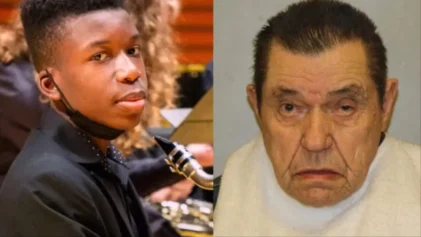A recent study reported in the Journal of the American Heart Association reveals a racial disparity in which children get CPR from bystanders. As a result, the authors say training needs to be put at the forefront.
The study notes that there is a difference in the rates at which bystanders give those who stop breathing in Black neighborhoods cardiopulmonary resuscitation as opposed to ones who cease exhaling in white communities. The study also revealed there were less stark racial disparities between wealthier neighborhoods.

“This is a great study using the CARES database, our best and largest registry of out of the hospital cardiac arrests,” Dr. Clifton Callaway, vice chair of emergency medicine at UPMC in Pittsburgh, Pennsylvania said to Reuters. Callaway is also a member of the American Heart Association’s Emergency Cardiovascular Care Committee. “It showed that children from neighborhoods where the majority of people are nonwhite do not get bystander CPR at the same rates as those from neighborhoods that are predominantly white. And that is something we need to work on as a country.”
The study reviewed results for 7,000 American kids, most of whom were Black or white. Along with racial makeup, the study also took into account the unemployment rate, education level and median income. The study established an index range from 0-4 based on the above neighborhood characteristics associated with bystander CPR.
A neighborhood with over 80 percent Black residents, that had more than 10 percent of people unemployed, less than 80 percent who obtained a high school diploma and had a median household income of less than $50,000 got a score of four. Communities that scored zero were the most advantaged.
Researchers learned that children in low-income, mostly Black communities were about 50 percent as likely for a bystander to perform CPR compared to those in the majority of privileged areas.
Compared to wealthy communities, bystander CPR was 20 percent less likely to occur in communities that scored one, 25 percent less likely for those that scored two, 38 percent less likely for three and 54 percent less likely if they had four as a score.
As for a solution, the research concludes “Targeted cardiopulmonary resuscitation training for nonwhite, low‐education, and low‐income neighborhoods may increase bystander cardiopulmonary resuscitation provision and improve out‐of‐hospital cardiac arrest outcomes in children.”
The lead author of the study is Dr. Maryam Y. Naim, an assistant professor at the Children’s Hospital of Philadelphia and the University of Pennsylvania’s Perelman School of Medicine. She said such disparities in CPR performance in these cases, 60 percent of which affect infants, highlight the need for training.
“This tells us there is an opportunity to improve bystander CPR by really targeting these neighborhoods for training,” she said before adding, “In 39 states, all high school graduates are mandated to be trained in bystander CPR and AED use, but I feel it’s also important to educate parents since the majority of these cardiac arrests are occurring in infants less than a year in age,” Naim said.
The pediatric intensivist also emphasized the importance of getting such measures in place once infants are released from the hospital after birth.
Echoing the study writers’ call for training, specifically in the case of newborns, is Callaway, of the AHA’s ECC, who said to Reuters: “We know it works for other public health problems. We have made car seat training a mandatory part of taking a baby home. And injuries to children in motor vehicle crashes have declined and declined over the years.”


